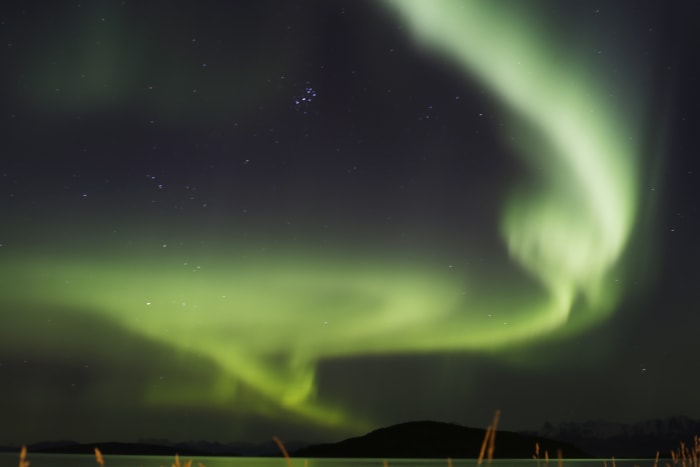Michigan residents across the state will have one of the best shots in decades to see Northern Lights, thanks to the sun.
Space weather forecasters have issued a Severe (G4) Geomagnetic Storm Watch (the first since 2005) for the evening of Friday, May 10, lasting until Sunday, May 12. Additional solar eruptions could cause geomagnetic storm conditions to persist through the weekend, extending the field of possible Northern Lights south into Michigan, especially on Friday night into Saturday. (May 10-11).
—> More: Severe geomagnetic storm watch issued for first time in nearly 20 years
Here’s what you need to know.
When is the best time to look for Northern Lights in Michigan?
The peak time will be midnight to 4 a.m. Saturday (May 11).
Where is the best place to look?
Cloud cover ahead of our next rain maker appears to work its way into Northern Lower Michigan before the Thumb region tonight, so I actually think your best chance of seeing the Northern Lights overnight will be in the Thumb region, closer to Port Huron, and possibly areas of Metro Detroit, in an area away from light pollution. — Local 4′s Ashlee Baracy
Northern Lights forecast map:
Here’s a look at the projected forecast: The red line shows how far south the aurora could stretch. That line has moved further south since Thursday’s forecast, and now most of Michigan is in color range.
Northern Lights viewing tips:
-
Look north! The aurora will likely be on the horizon but higher in the sky the further north you are.
-
Dim the lights: Find an area with less light pollution for your best chance.
What are the Northern Lights?
The bright dancing lights of the aurora are actually collisions between electrically charged particles from the sun that enter the earth’s atmosphere. The lights are seen above the magnetic poles of the northern and southern hemispheres.
They are known as ‘Aurora borealis’ in the north and ‘Aurora Australis’ in the south.. Auroral displays appear in many colors although pale green and pink are the most common. Shades of red, yellow, green, blue, and violet have been reported.
The lights appear in many forms from patches or scattered clouds of light to streamers, arcs, rippling curtains or shooting rays that light up the sky with an eerie glow.
What are coronal mass ejections?
CMEs are explosions of plasma and magnetic fields from the sun’s corona. They cause geomagnetic storms when they are directed at Earth.
Geomagnetic storms have been known to impact infrastructure in near-Earth orbit and on Earth’s surface. This could potentially disrupt communications, the electric power grid, navigation, radio and satellite operations.
According to SWPC, only three severe geomagnetic storms have been observed during this solar cycle, which began in December 2019. The last G4 (severe) was spotted on March 23, 2024, this triggered a geomagnetic storm alert.
The last G5 (extreme) caused the Halloween storms in October 2003. That G5 caused power outages in Sweden and damaged power transformers in South Africa.
Copyright 2024 by WDIV ClickOnDetroit – All rights reserved.
